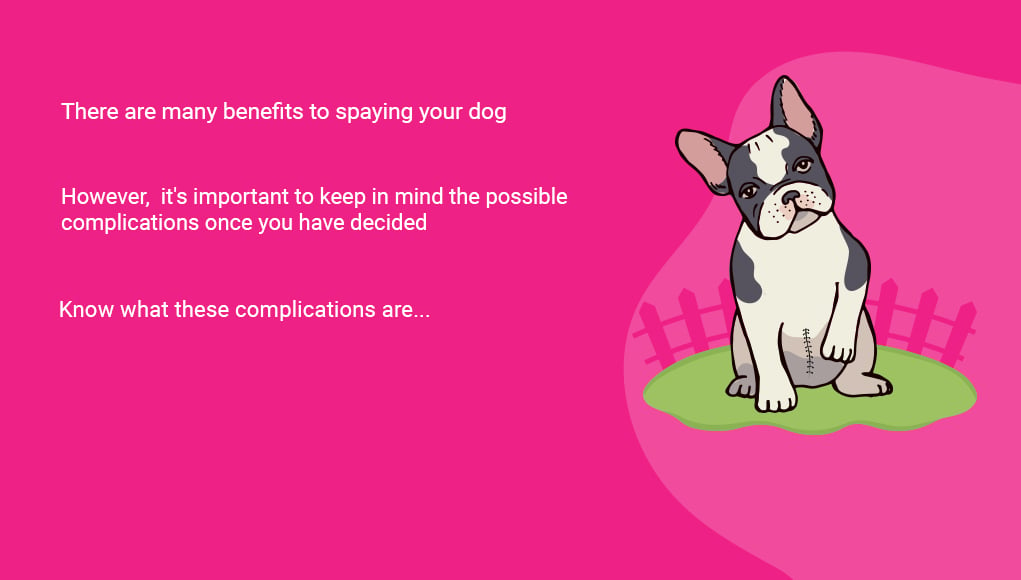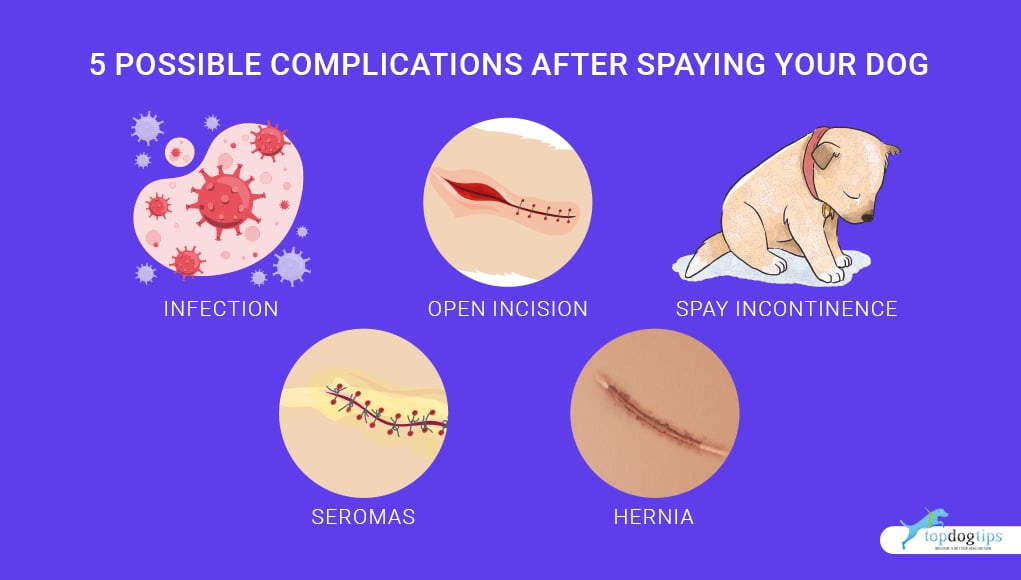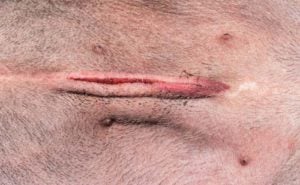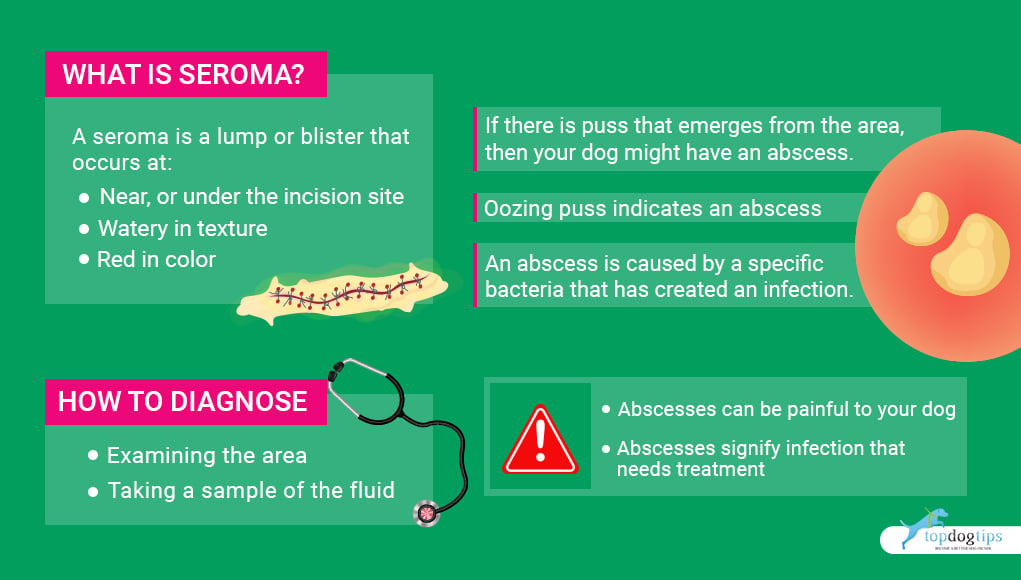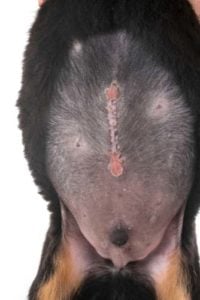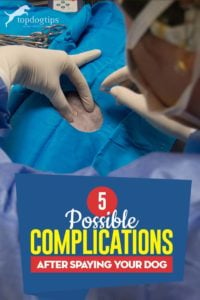Table of Contents
There are many benefits to spaying your dog. With this procedure, you won't have to worry about your pup going into heat every three weeks.
All the complications of spaying that may present are minimal compared to the possibility of puppies and the increased risk of diseases.
Furthermore, studies have shown that you can increase her life expectancy by spaying and decreasing her chance of future diseases, including breast cancer and uterine infections.
With all the benefits of spaying your female dog, it's essential to consider the possible complications once you have decided.
The potential warning signs after the surgery typically include infection, spay incontinence, opening an incision, seromas, and hernia.
5 Warning Signs After Spaying and Neutering Dog
Dog Infected Stitches
You should check your female pup for infection or infected stitches no less than twice each day.
A condition will make the incision site red and hot to the touch. It could also cause the incision site to ooze blood or puss.
An infection could occur if your dog excessively cleans or chews at the incision site. Do not allow other home pets to lick the incision site, either.
Follow your veterinarian's instructions on keeping the incision site clean to help minimize the possibility of infection.
Usually, internal sutures, or stitches, are used to close the opening from spay surgery, so you will not be able to see visible stitches.
Still, if infected or bothered, the sutures could open.
Open Incision
Even though the sutures are placed internally, your dog can loosen or break the sutures open.
Opening the incision increases the risk of infection and other problems.
Your dog may be able to open her sutures by licking or gnawing on the incision site.
She may also open the incision by tearing or breaking the sutures if she plays hard or exercises too much.
To reduce the risk of your dog opening her incision after her surgery, use an Elizabethian collar, comically called “the cone of shame.”
This dog cone-like collar attaches to your dog's collar and will prevent your dog from licking or gnawing at the incision site, even if you cannot watch her every move.
Spay Incontinence
This post-spay complication does not show up immediately after your dog's surgery.
It might take some time for this complication to present itself.
Spay incontinence happens because of the drop in your dog's estrogen hormone levels.
Your dog's sphincter muscle is controlled in part by its estrogen hormone.
By decreasing the hormone, your dog may be unable to hold her bladder.
This complication is usually seen in dogs from larger breeds.
If your dog is suffering from post-spay incontinence, talk to your veterinarian.
The vet will be able to assess the animal and will potentially prescribe her medication.
Supplemental estrogen and herbal supplements are commonly used to help your dog's urinary health.
Additionally, your veterinarian may suggest that you avoid certain grains, which could upset your dog's urinary tract.
Seromas
A seroma is a lump or blister at, near, or under the incision site.
Seromas are usually filled with fluid that could be watery in texture and red in color.
If a puss emerges from the area, your dog might have an abscess.
An abscess is caused by a specific bacteria that has created an infection.
Your veterinarian can adequately diagnose if your dog has a seroma or an abscess by examining the area and taking a fluid sample from the site.
Often, seromas are painless and will clear up on their own.
You should take her to the veterinarian if you notice bumps or lumps with oozing puss at your female pup's incision site.
Generally, oozing puss indicates an abscess.
Abscesses can be painful to your dog and indicate an infection that needs treatment.
Hernia After Spay or Neuter
Sadly, your dog can get a hernia after spay or neuter surgery.
A hernia will look like a lump protruding from the abdomen near the incision site.
If a hernia on a dog consists of fat only, then your puppy may not experience any pain.
However, some hernias result from organs slipping through the abdominal wall, such as the intestine or bladder.
If your dog has a hernia, it will likely need surgery to correct the problem.
Sometimes, hernias in dogs can be life-threatening, so if you suspect she has a hernia, you should return to the veterinarian immediately.
Other Issues to Be Aware Of
In addition to post-spaying surgery complications, complications that could happen during the surgery are vital to discuss.
One possible complication during the surgery is that your female dog reacts badly to the anesthesia.
However, there are tests that your veterinarian can do to ensure that she will not have an inadequate response to this.
Talk to your vet before starting surgery if you're worried about an adverse reaction, or if you know, your dog has reacted to anesthesia previously.
Keep in mind that spay surgery is an effective procedure for your dog.
Once the surgery is complete and your canine is back home, it is crucial to keep her calm, clean, and comfortable.
You do not want to allow your pet to become overly excited or exert themselves.
Follow the vet's advice for aftercare to ensure your dog is comfortable and has the most excellent chance of avoiding possible and dangerous complications.
After the spay surgery, your veterinarian may suggest pain medication and antibiotics.
Pain medication and antibiotics will likely decrease the potential for some of the spay above surgery complications.
Follow the dosage recommendations carefully to ensure your pup gets the most of its pain medication and antibiotics.
The animal may also show signs of post-surgery complications through vomiting, loose stool, panting excessively, or experiencing breathing problems.
If you suspect that your female dog has a complication from their spay surgery, get her back to the veterinarian as soon as possible.
You want to prevent any further damage or worse issues.
FAQs on Warning Signs After Spay or Neuter
How to Tell if a Dog Is Spayed?
An easy way to tell if a dog is female is to look for a spay scar.
Stand the dog up or lay them on their back if they let you.
You should be able to find their belly button, there should be a swirl mark around the middle of their belly.
If you move down from the belly button towards their tail then you should be able to find it. Here is a video:


